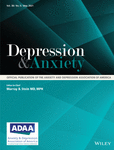Network analysis of PTSD and depressive symptoms in 158,139 treatment-seeking veterans with PTSD
Abstract
Background
In recent years, a new framework for analyzing and understanding posttraumatic stress disorder (PTSD) was introduced; the network approach. Up until now, network analysis studies of PTSD were largely conducted on small to medium sample sizes (N < 1,000), which might be a possible cause of variability in main findings. Moreover, only a limited number of network studies investigated comorbidity.
Methods
In this study, we utilized a large sample to conduct a network analysis of 17 symptoms of PTSD (DSM-IV), and compared it to the result of a second network consisting of symptoms of PTSD and depression (based on Patient Health Questionnaire-9 [PHQ-9]). Our sample consisted of 502,036 treatment-seeking veterans, out of which 158,139 had fully completed the assessment of symptoms of PTSD and a subsample of 32,841 with valid PCL and PHQ-9 that was administered within 14 days or less.
Results
Analyses found that in the PTSD network, the most central symptoms were feeling distant or cut off from others, followed by feeling very upset when reminded of the event, and repeated disturbing memories or thoughts of the event. In the combined network, we found that concentration difficulties and anhedonia are two of the five most central symptoms.
Conclusion
Our findings replicate the centrality of intrusion symptoms in PTSD symptoms' network. Taking into account the large sample and high stability of the network structure, we believe our study can answer some of the criticism regarding stability of cross-sectional network structures.
Open Research
DATA AVAILABILITY STATEMENT
As the matter of open science is important to us and we are dealing with confidential data, we have decided to submit all of our analyses code to the Open Science Foundation webpage, as well as all network matrices, so any researcher will be able to use the data and assess our analyses. All these materials can be found here: https://osf.io/48m2t/. For any questions, please contact the corresponding author.




